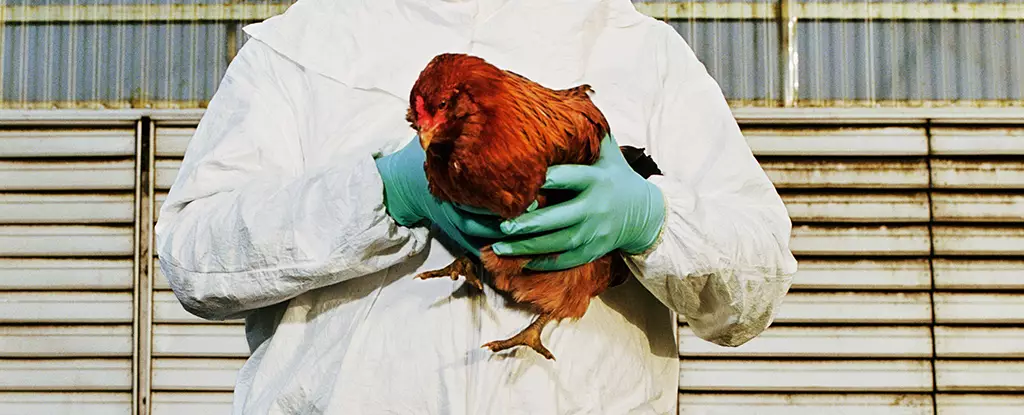The H5N1 avian influenza virus has become a growing concern across the United States, as outbreaks among animal populations raise alarms about the potential for human infection. With a staggering fatality rate of 50% in infected humans, there’s a pressing need to monitor the situation closely. Experts are particularly vigilant regarding the prospect of human-to-human transmission, which, according to recent research, could be facilitated by relatively minor genetic changes in the virus.
The risk posed by H5N1 is compounded by its capability to adapt and mutate rapidly, particularly in response to environmental pressures within different hosts. Scientists are keenly focused on understanding how these mutations might occur, and how quickly they could lead to a strain capable of igniting a human pandemic.
Recent studies, particularly those conducted by researchers at the Scripps Research Institute, have highlighted a significant concern regarding the mutation capabilities of H5N1. The focus of their research revolves around the specific 2.3.4.4b strain of H5N1, associated with recent human infections. They discovered that a single mutation—designated as Q226L—can enable the virus to shift its targeting mechanism from avian-type receptors to those found in human cells. Essentially, this mutation acts like a set of glasses for the virus, providing it a new vantage point to latch onto human cells.
The implications of this discovery are substantial. As biochemist James Paulson indicates, the Q226L mutation could provide the virus with an unprecedented opportunity to ensconce itself within human biology. Such adaptability raises an ominous possibility: if the virus acquires the ability to attach to cells in the human respiratory tract, the pathway to human-to-human transmission would likely become far more accessible.
Given the serious nature of these findings, constant surveillance of H5N1 is of paramount importance. Regular monitoring can help identify emerging strains and genetic modifications that might enhance the virus’s ability to infect humans. While the Q226L mutation is a critical concern, experts caution that additional mutations may be required before the virus fully evolves into a form capable of sustained human transmission.
Ting-Hui Lin, the lead author of the Scripps study, emphasizes that current strains, even with mutations like Q226L, do not guarantee that H5N1 will become transmissible among humans. Nonetheless, the research underscores the necessity for the scientific community and public health authorities to maintain a high level of awareness and readiness. Continued study into the genetic changes of H5N1 over time will be crucial in predicting its evolutionary trajectory.
The challenge of preventing another global pandemic, as seen with COVID-19, lies not only in understanding pathogen behavior but also in our healthcare systems’ capacity to respond. Experts agree that vigilance in tracking the H5N1 virus is crucial for establishing protective measures. Ian Wilson, a biologist involved in the research, emphasizes that keeping tabs on genetic shifts will provide insights essential for future preparedness, potentially averting widespread transmission.
Additionally, proactive measures must also be enacted, including enhancing biosecurity in poultry farms and ensuring that health professionals are trained to recognize and respond to potential cases of avian influenza. Awareness campaigns targeting those who may come into contact with infected birds, including agricultural workers and veterinarians, will be vital in reducing the risk of spillover events.
The resurgence of the H5N1 virus brings forth serious implications for both animal and public health. While current mutations show promise in altering the interaction of the virus with human cells, extensive research must continue to unravel the complexities of these changes. Our preparedness is contingent upon recognizing the virus’s potential to mutate, the need for rigorous monitoring practices, and an understanding of how public health officials can best respond to mitigate risks. Without a strategic approach to monitoring and controlling H5N1, we may find ourselves facing a significant health crisis. Thus, collective action and heightened vigilance are crucial in safeguarding global health and preventing the next potential pandemic.


Leave a Reply